Thanks to Garygeezer on Instagram for sending me this developer to try out for the first time and thanks to all that have commented on the video I released in my “Wednesday Wonder” series.
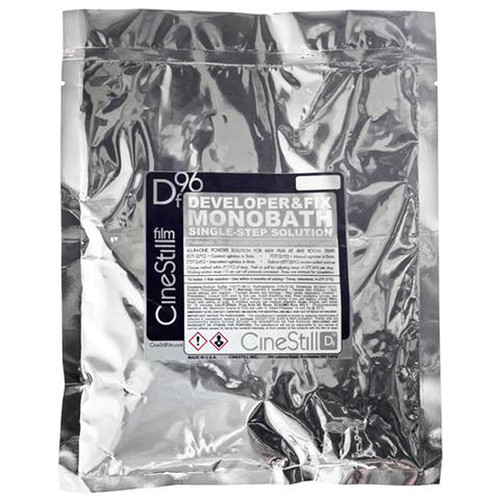
Gary sent me the powder version to try out. It makes 1 Ltr.
First of all let’s get on with the mixing. The instructions are very clear and similar to other powders such as XTOL and D76. Part A and Part B.
It says to use Distilled Water, however, I always use our tap water which I’ve never had any issues with. I filled a jug with 700ml of water at room temperature (20°) and mixed in part A. It took about 10 minutes or so to fully dissolve with constant stirring. The colour was a muddy looking colour. I then poured in Part B which looked like Hypo Crystals. These took a bit longer to fully dissolve and once they did the colour of the soup was not as clear as I imagined. Almost a very light yellow. I then put the 1Ltr liquid into an accordion bottle which is where it will keep.
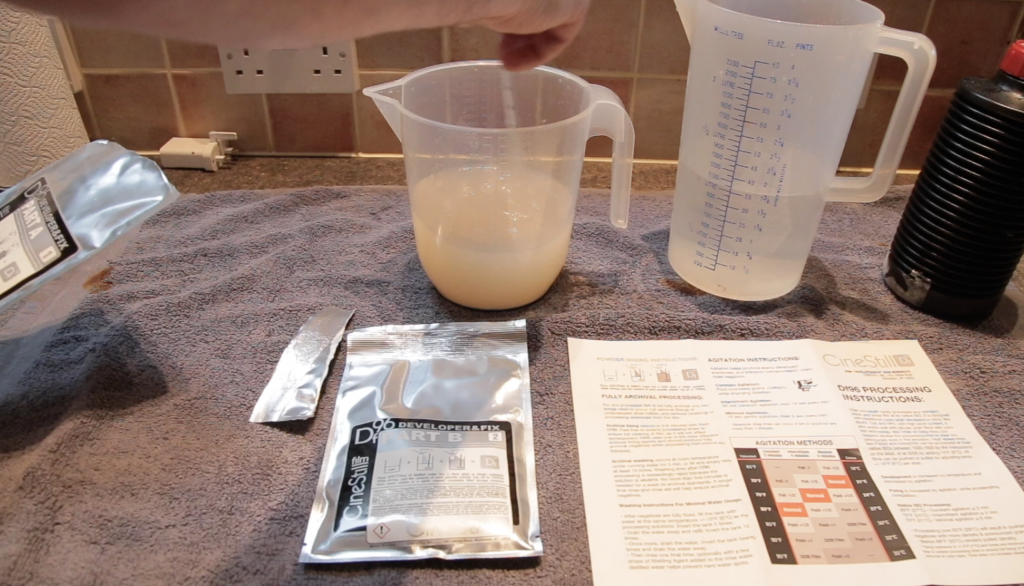
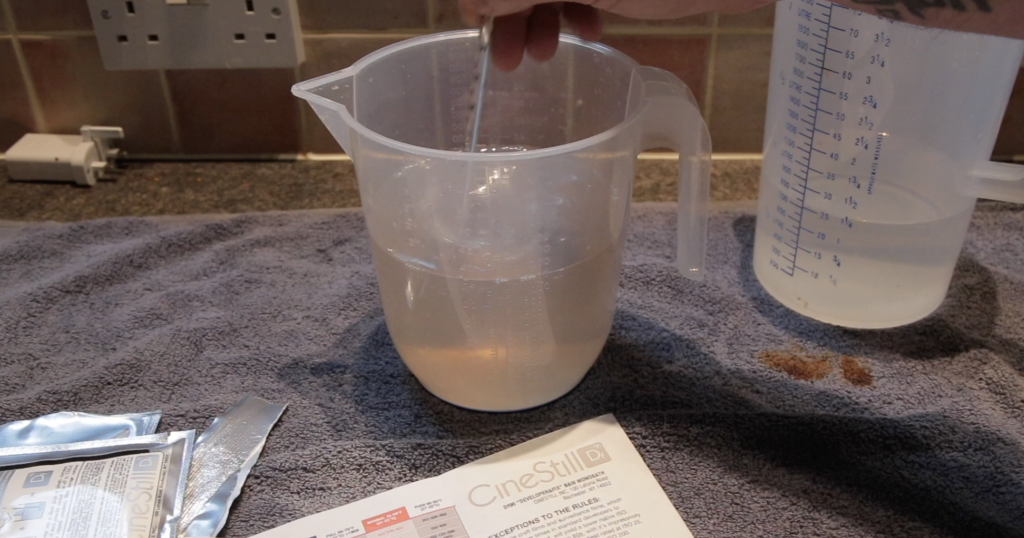
Next step was to take some photographs. I chose to shoot a tulip against window light. For this I used a Mamiya RZ67 and a roll of expired Ilford FP4 (2014).
After the shoot I then proceeded to develop the film.
The instructions are quite simple to follow. For my film I chose “Minimal Agitation” 6 minutes with 10 seconds Gentle agitations to start and then 5 second inversions every minute after. (see instructions)
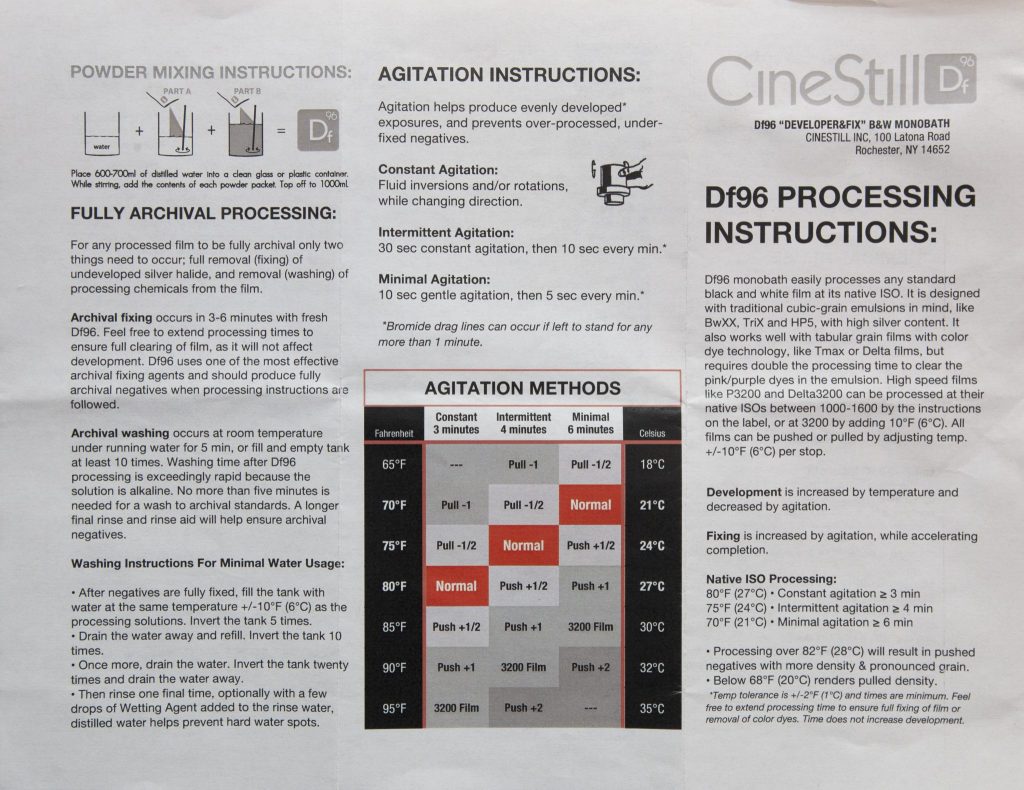
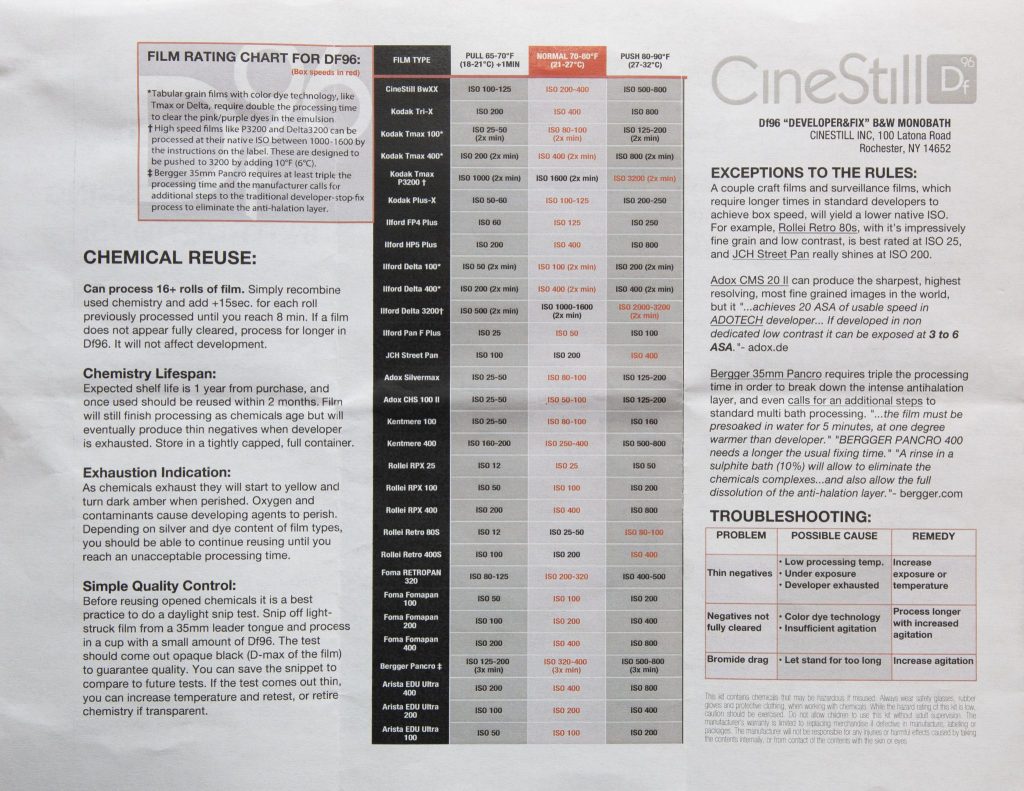
After the wash the negatives were very flat and looked under developed. I followed the instructions.
I guess it wasn’t fair to use an expired film on a test so I took another roll of 2014 FP4 and took the same shots and developed in Rodinal. This time my negatives were as expected.
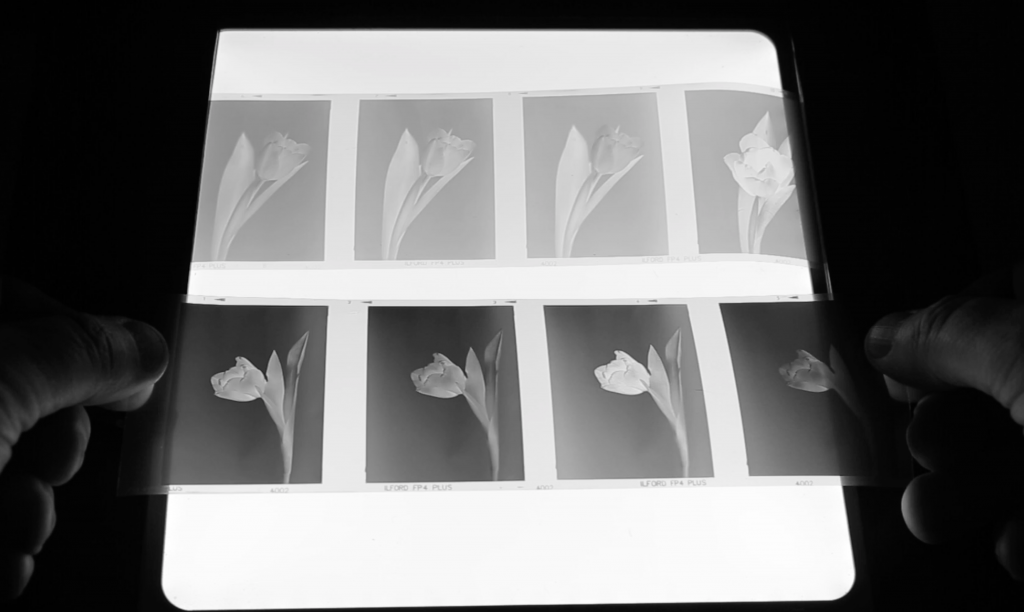
So what went wrong? I followed the instructions for FP4.
I ran out of FP4 and made a few more tests with Ilford Ortho 80 film by shooting single frames and cutting them out of the camera in the dark and used the films container as a dark tank to develop.
The one below was 6 minutes. 10s inversions to start and then 5 inversions each minute at 21°. Still under developed.
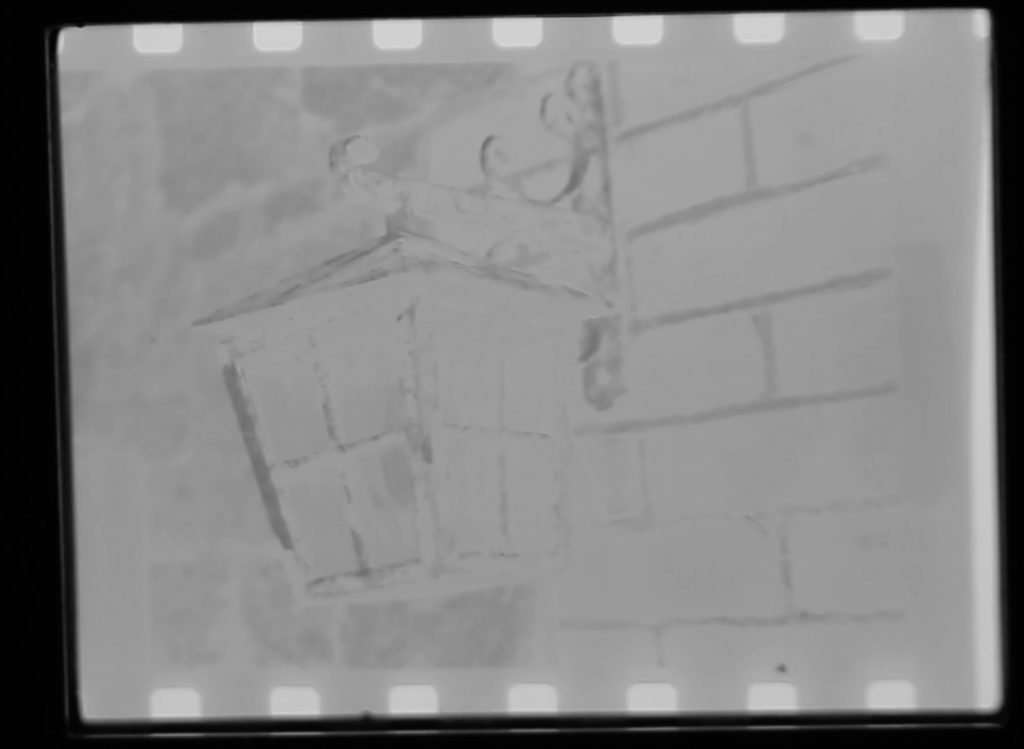
The one below was 6 mins constant inversions! 21°. Still under!
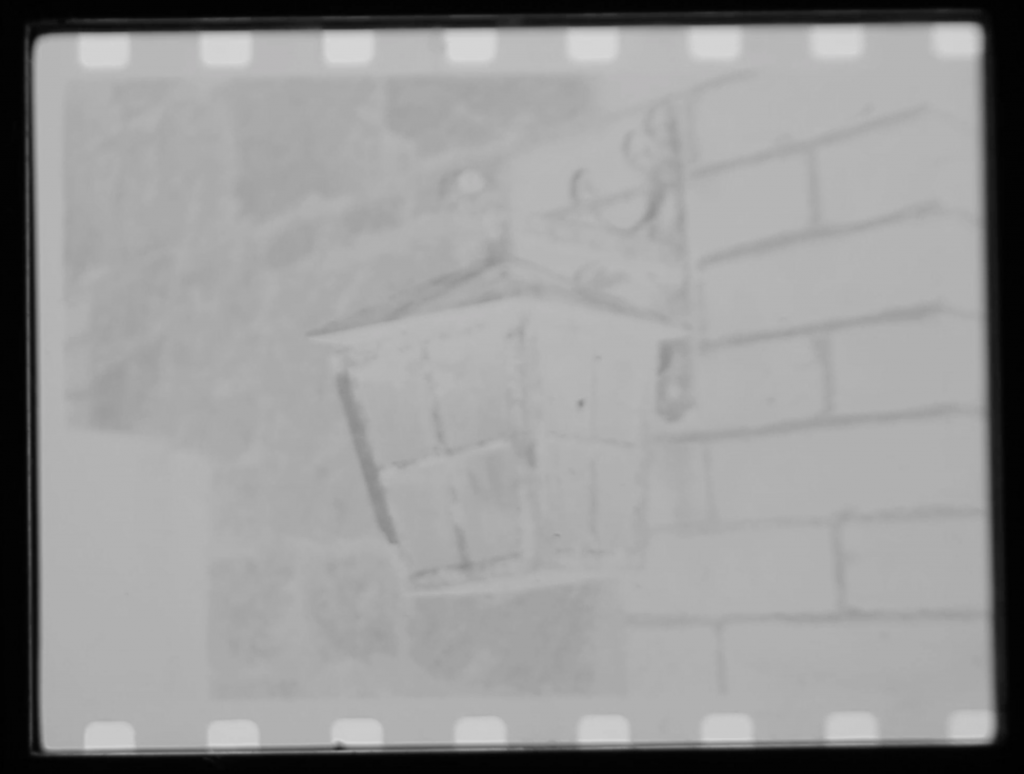
This one was 10 minutes constant inversions at 30°. I now have better results. I now know the developer is working!
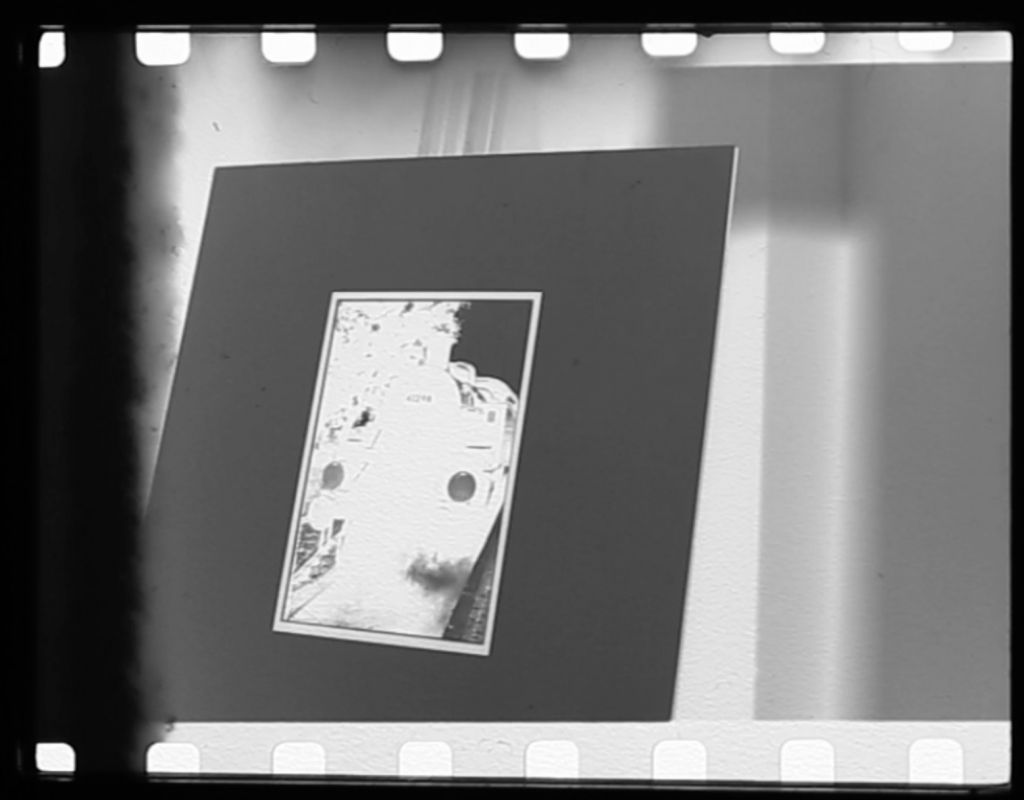
The instructions say DEVELOPMENT is increased by Temp and Decreased by agitation. FIXING is increased by agitation. Interesting as I inverted this continuously for 10 minutes. Maybe it was the temp that got the development up to speed.
So going forward maybe I need a higher temp and less agitation going against what the instructions say. So I decided to make more tests .
The one below was 6 minutes at 27°. 10 second inversions to start then 1 inversion every minute. At last. A result!
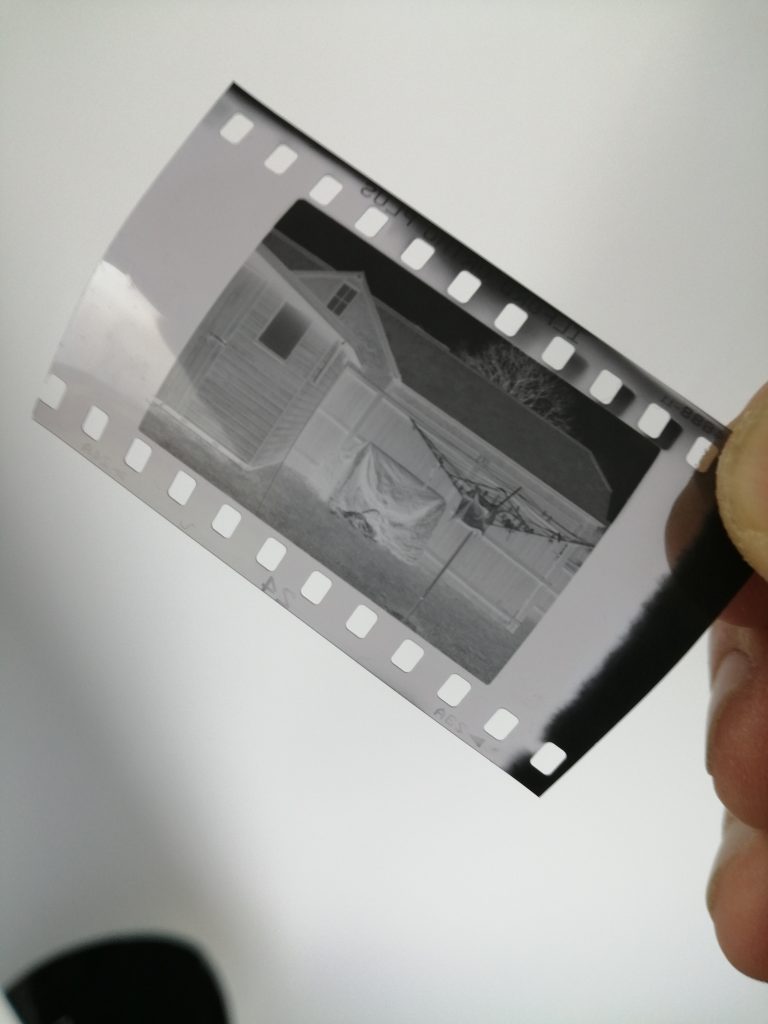
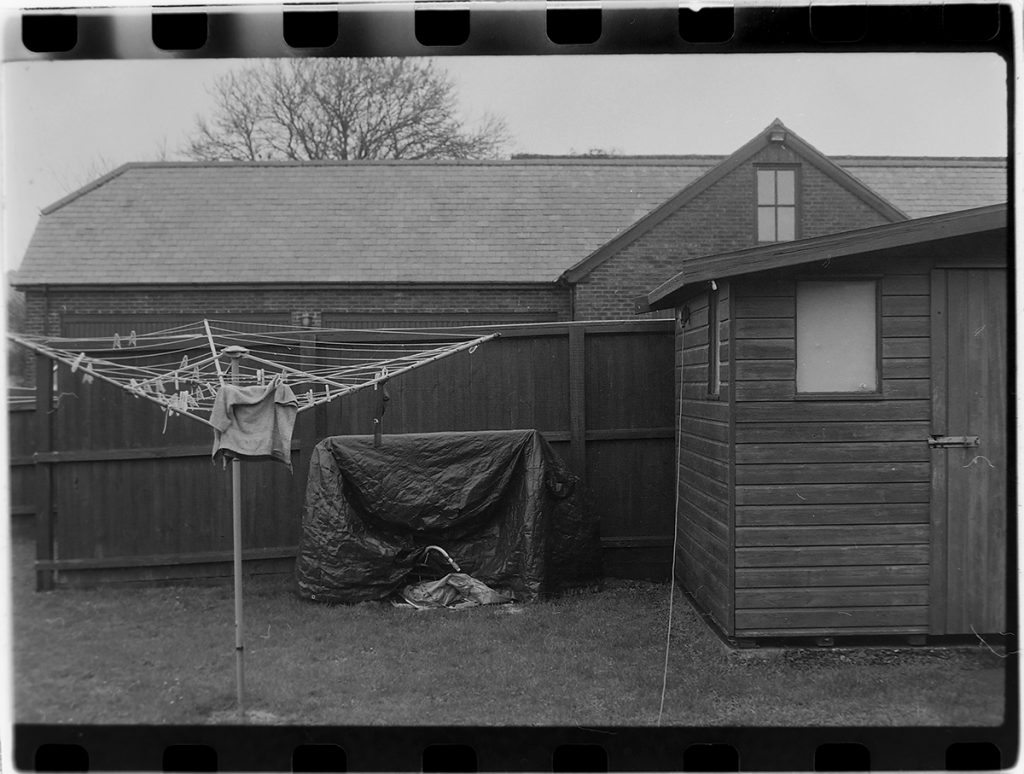
So with that in mind I shot the last of the Ortho 80 which had 8 frames left on some Tulips and proceeded to develop using the above times. Here is what I got…
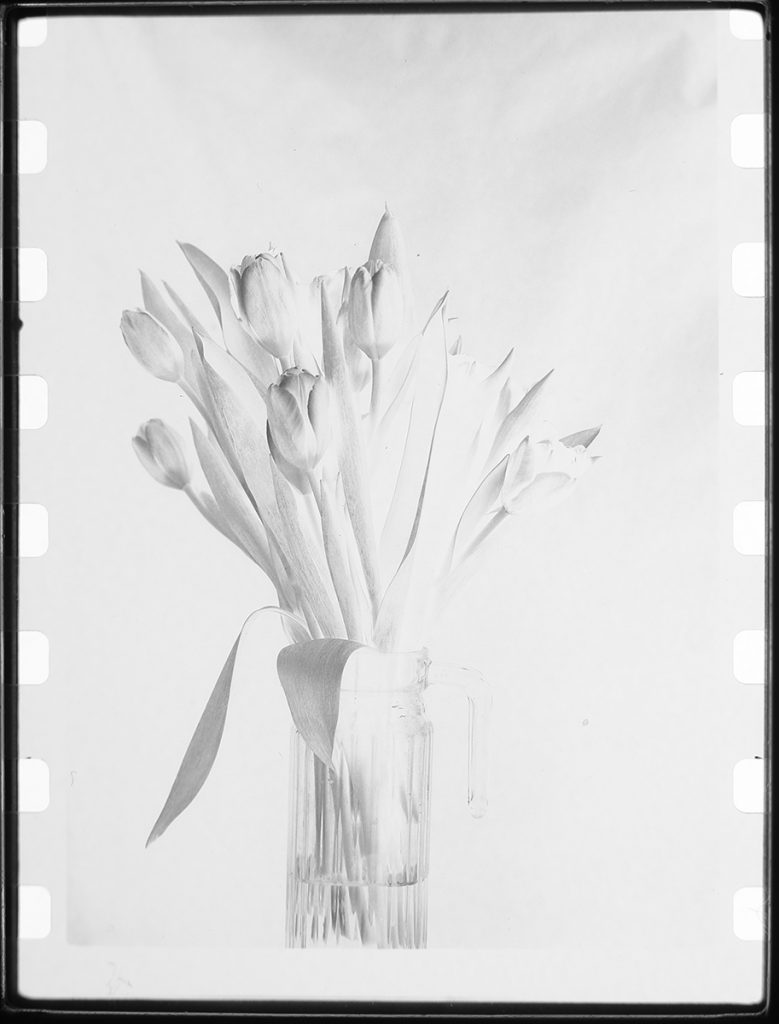
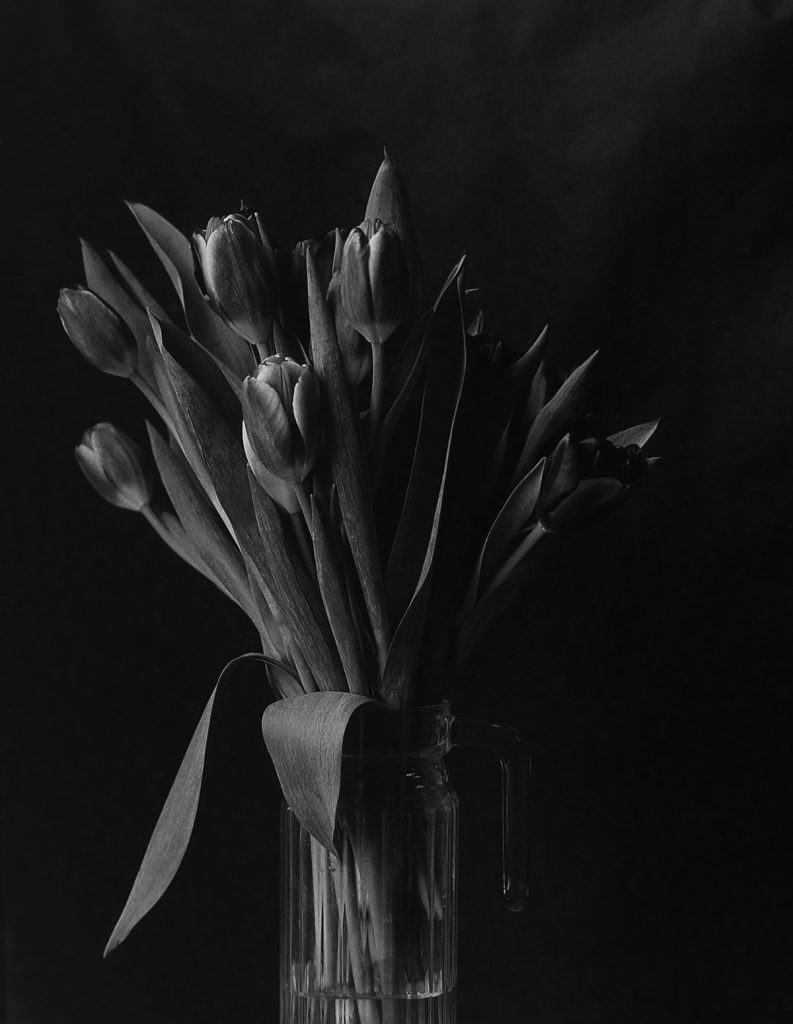
So these are Red and Orange Tulips shot on Ortho Film. That explains the dark flowers, regardless this has not come out that bad at all and I am impressed. I had to scan the Negative using my DSLR and just pulled the blacks down in Photoshop.
So onwards and upwards. Like anything new we have to play and experiment until we find a sweet spot and then decide if we like or dislike the process.
Will Cinestill Monobath pull me away from my regular developing practices? Not at all. I know where I am with my choice of film and developers but it sure is interesting to try something new that I would have otherwise never bothered to try. Saying that I do like to play around with single film frames in my darkroom trying out camera leaks, solarisation, toning and other fun stuff whilst using the films container to develop so I can imagine monobath will be much easier for me to develop my film without going through the stop and fix making my experiments quicker when developing. Of course not for testing film though!
I also think that it is great for those just starting out that don’t have the space and want to get into developing film without all the added extra of stopping and fixing. Of course it doesn’t take long to do but it’s something else not to worry about. Just Dev & Go! But… In time you may want to try other developers where you will need to use stop and fix.
You can see the video of my first try on my YouTube Channel on this link.









